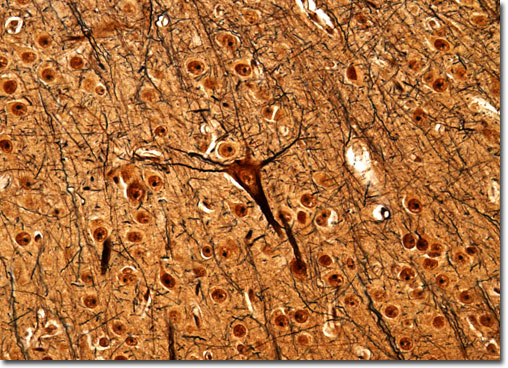|
The many complex functions carried out by humans on a daily basis are now understood to be regulated by the brain, which has changed significantly over the course of evolution. Today, the vast majority of the brainís weight (about 85 percent) is dedicated to the cerebrum. In early man, however, the cerebrum was not as well developed, consisting of only about a third of its current weight. This significant physical change has been accompanied by important changes in the mental processes, humans becoming increasingly capable of more and more complex activities over time. Indeed, most scientists believe it is the relative size of the cerebrum that most differentiates humans from other animals, since it is considered the origin of all conscious activity. It is important to note, however, that the purely physical size of the brain is not an indication of intelligence, since, for example, the brain of an elephant is about four times the size of a human brain, but the animal does not exhibit a correspondingly larger mental capability.
|
